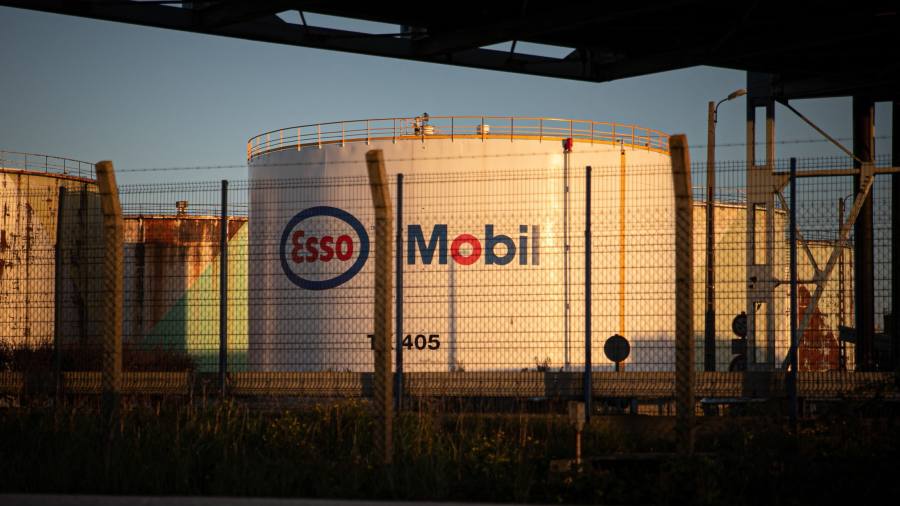Receive free Exxon Mobil Corp updates
We’ll send you a myFT Daily Digest email rounding up the latest Exxon Mobil Corp news every morning.
ExxonMobil’s profits tumbled as the company said oil prices were returning to “normal”, signalling an end to the commodity turmoil that has roiled the global economy since the Ukraine invasion.
America’s biggest oil company posted net income of $7.9bn for the second quarter, less than half of the unprecedented haul of $17.9bn it reported during the same period in 2022.
Excluding last year, the profit figure, which came in broadly in line with Wall Street estimates, was the company’s strongest for this time of year in more than a decade.
“We expected prices to moderate after record earnings,” Kathy Mikells, Exxon chief financial officer, told the Financial Times. “If you look at the overall price environment, across most of our businesses, we’re back within what we would call the 10-year normal range.”
The fall in Exxon’s earnings mirrors drops reported by its rival oil majors as commodity prices recede after spiking in the wake of Moscow’s full scale invasion of Ukraine last February.
Smaller US rival Chevron reported earnings of $6bn for the period, down by about half compared with a year ago.
Italy’s Eni reported adjusted net profits of €1.94bn on Friday, down 49 per cent from the second quarter of 2022 but still ahead of average analysts’ estimates of €1.6bn.
Shell and TotalEnergies reported similar falls this week with second-quarter earnings down 56 per cent and 49 per cent, respectively. Analysts expect BP to follow a similar course when it reports next week.
Brent crude, the international oil marker, averaged about $78 a barrel during the period, compared with $112 a barrel a year ago. Natural gas prices, which spiked to more than $6 per million British thermal units in the US last year, have since fallen back below $3 per million Btu.
Exxon said efforts to drive down costs meant it was able to maintain elevated profits even in a weaker price environment. The company said it was on track to reduce overheads by $9bn by the end of the year compared with 2019.
“The work we’ve been doing to improve our underlying profitability is reflected in our second-quarter results, which doubled from what we earned in a comparable industry commodity price environment just five years ago,” said Darren Woods, Exxon chief executive.
Still, the company has been ratcheting up capital spending in certain regions, driving up output by a fifth in the sprawling Permian Basin of Texas and New Mexico — America’s most prolific oilfield — and in Guyana, where it is ramping up offshore production after a major discovery in 2015.
Read the full article here



